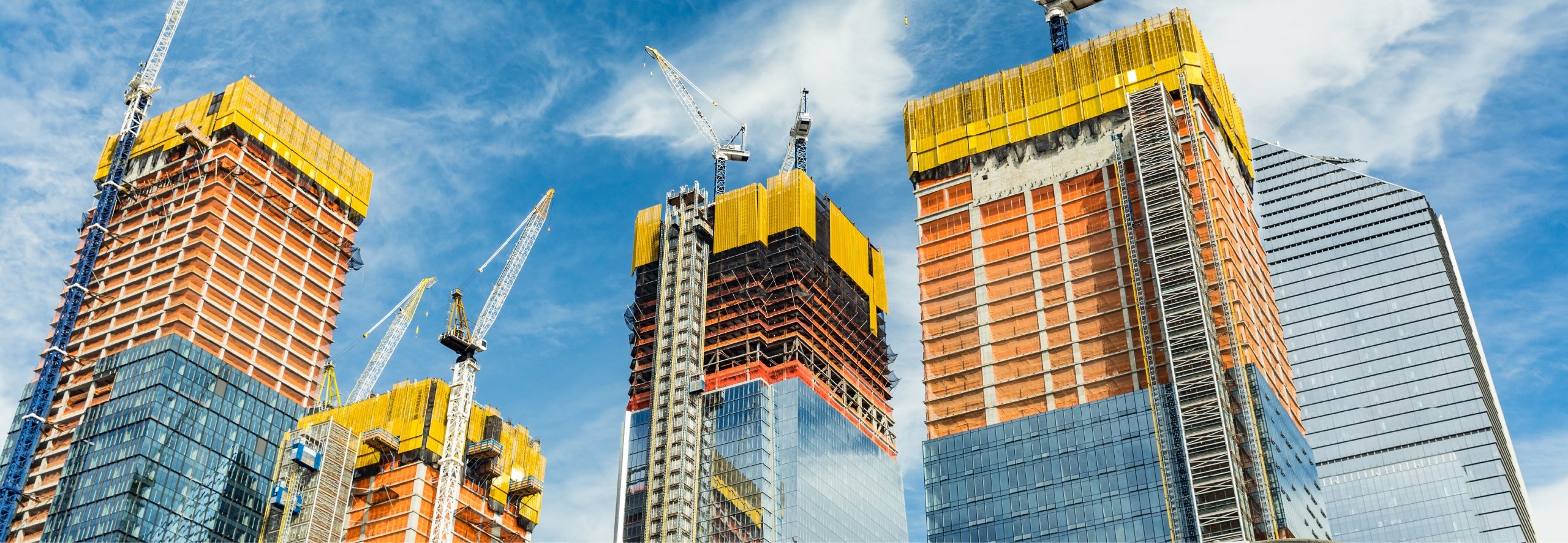Pent-up demand in the U.S. lifts commercial real estate short-term
IN BRIEF
- Keep an eye on inflation, interest rates and unemployment, as they seem to be the key indicators closely linked to demand for commercial real estate transactions.
- There’s been an ongoing trend away from the Mid-Atlantic and Western regions in the U.S., which was further accelerated by local restrictions and the reduced need to live where you work during the COVID pandemic.
- Pent-up demand should drive the market through 2023, but don’t expect any exponential growth beyond that. Revenue will continue to increase at a very modest 1% to 2% per year.
As we begin to emerge from the pandemic, it seems that what happens in the real estate sector, specifically the commercial real estate sector, will go a long way to determining how quickly cities recover financially. The pandemic accelerated perhaps two trends in terms of commercial real estate. One, offices in cities’ business districts sat basically empty for 18 months, and a lot of those tenants are evaluating how they’ll work in the future and how office space—specifically downtown office space—will factor into that. Two, the retail sector was changing prepandemic, but the explosion in online commerce during the pandemic may have altered brick-and-mortar shopping in a significant way. Given the pandemic, it’s not surprising that the commercial real estate sector was down some 1.5% in revenue from 2015 to 2020, but the forecast gets better from there. IBISWorld, in its latest Commercial Real Estate in the U.S. report, is forecasting a relatively flat 2021 commercial real estate market at $890 billion but is predicting growth of 4.8% in 2022, 9.8% in 2023 and 4.3% in 2024. It says the market will eventually hit about $1.15 trillion in revenue by 2026, a 25% jump over the next five years. Jon Critelli, Managing Director with Protiviti and an expert on the real estate market, sat down with Joe Kornik, Editor-in-Chief of VISION by Protiviti, to discuss the U.S. commercial real estate sector and how it’ll impact the future of cities.
Kornik: Jon, thanks for joining me today. Given all that’s gone on with the sector during COVID, those numbers from the IBISWorld commercial real estate report sound pretty optimistic to me. What do you make of them?
Critelli: On the surface, these numbers seem optimistic, but the reality is mixed when you consider what makes up the commercial real estate market. While traditional, high-end office space may be in less demand, especially in densely populated urban areas, other segments such as industrial, retail and hospitality could grow. There is a generally accepted idea that brick-and-mortar retail stores will be in less demand, but recent studies are showing that consumers are trending toward multichannel shopping experiences where they move seamlessly between online and in-person shopping. Industrial segments will also likely continue to grow, based on increased demand and need for distribution and logistics hubs, along with data centers and other technology infrastructure that is supported through commercial real estate.
Kornik: That nearly 10% revenue spike in 2023 sounds exciting for the sector. Do you think that’s a matter of pent-up demand and projects that were put on hold pre-COVID returning? Or new projects and post-COVID optimism?
Critelli: I think it’s likely a combination of both but probably leaning toward the resumption of projects that were put on hold pre-COVID now coming back online or being greenlighted. New, nonresidential construction starts are actually down 5% year-to-date, so I think it’s probably a reflection of a resumption of projects that were placed on hold or were already strategically planned for. I also think revenue generated from facilities management, facilities operations and facilities optimization servicers, especially in the industrial segment, will follow the new construction through 2022, peak in 2023 and then begin to level off beyond 2023.
Kornik: How about from a geographic standpoint? The IBISWorld report has the U.S. Southeast leading the way, with the West and Mid-Atlantic being close behind. As you look out, do you see anything happening from a geographic standpoint that could be significant?
Critelli: I see a potential trend related to movement away from the Mid-Atlantic and West regions in the U.S. Economic activity follows population movement, and domestic migration trends are starting to demonstrate that people are moving away from New York, Illinois, California, New Jersey and Michigan and moving to Florida, Texas, North Carolina and Arizona. This trend has been occurring since 2010 and was further accelerated by local restrictions and the reduced need to live where you work during COVID. These migration trends will likely shift revenues across the regions over the next five years until the population starts to “resettle” in the post-COVID environment.
Kornik: We’ve mainly talked about the next five years, but I’m curious to hear your thoughts about the commercial real estate sector in the U.S. longer-term—say, 2030 or even beyond. How bullish are you on the sector overall, and what could that mean for U.S. cities over the next decade?
Critelli: I think revenue will continue to increase but at a very modest or more traditional 1% to 2% per year. There will also be demand for services related to property management, property transactions, and property development or redevelopment. I think construction will slow from pre-2020 levels, but again, spending in the municipal and institutional segment—some driven by government investment—will also support this growth through 2030. I’m optimistic that the market will remain steady, but don’t expect any exponential growth beyond 2022 and 2023, and even some of those estimates put out by IBISWorld seem a bit too optimistic to me.
I’m optimistic that the market will remain steady, but don’t expect any exponential growth beyond 2022 and 2023, and even some of those estimates put out by IBISWorld seem a bit too optimistic to me.
Did you enjoy this content? For more like this, subscribe to the VISION by Protiviti newsletter.




































